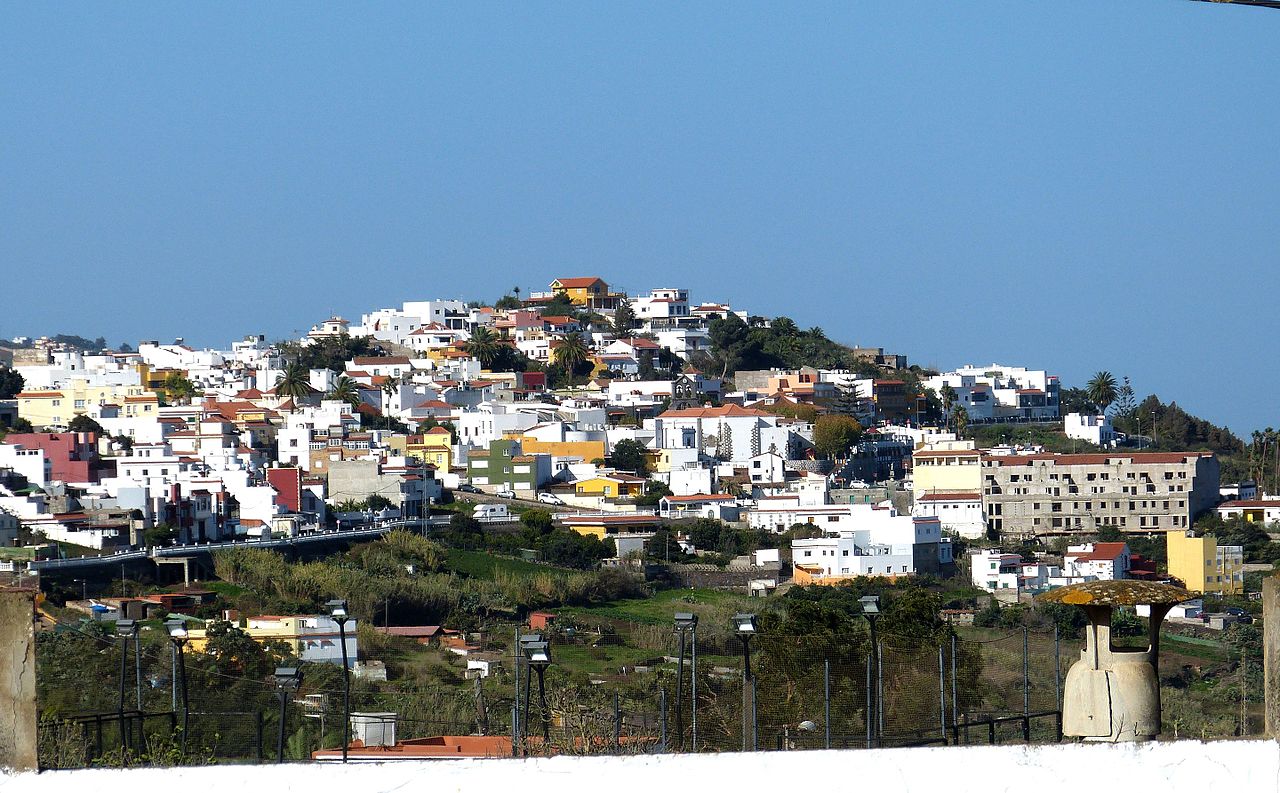
What to see in Firgas de Gran Canaria? This is an unusual question, since this municipality is outside the tourist packages offered by travel operators. And yet it is a real beauty which we strongly advise you to visit.
Located north of the gran canaria island, has wonderful natural surroundings. In fact, a large part of Firgas' surface is integrated into the Natura 2000 as a Special Conservation Area. But, in addition, the capital of the municipality, which bears the same name, is a typical town full of attractions and with more than one interesting monument. If, after this introduction, we have aroused your interest in what to see in Firgas de Gran Canaria, we encourage you to continue reading.
a wonderful nature
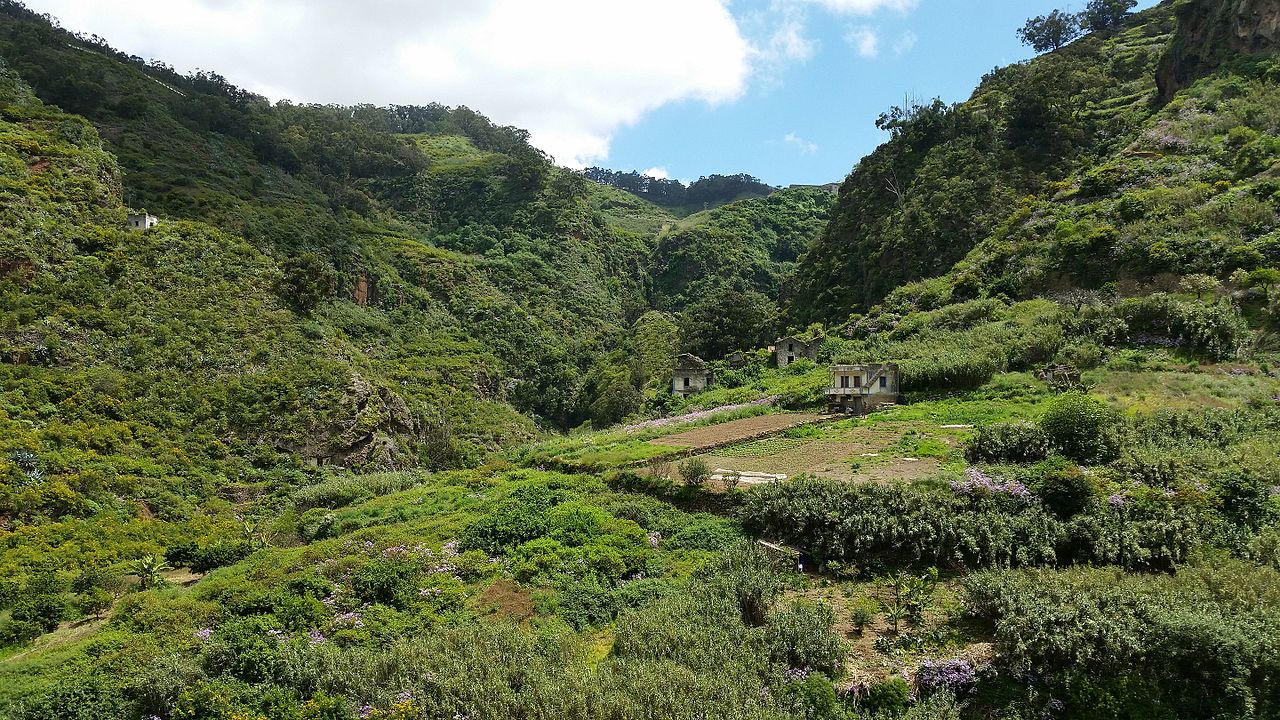
Azuaje Nature Reserve
Much of the municipality of Firgas is made up of a spectacular nature that will fascinate you. Specifically, it is the dramas country park and the Azuaje special nature reserve. They are both part of the Canary Islands Network of Protected Natural Areas and, as we told you before, of the Natura 2000 Network.
The rural park of Doramas, which receives this name in honor of an ancient aboriginal leader, has an area of 3586 hectares. And it also encompasses parts of the municipalities of Teror, Arucas, Moya, Valleseco and Santa María de Guía. It has spectacular spaces such as the Dark and Tilos ravines.
But, in addition, it is home to some four hundred species of plants, many of them endemic to the Canary Islands. Among them, the white sage and the so-called rooster's comb and rejalgadera. As for the fauna, you can see vertebrates such as the Osorio shrew and birds such as the long-eared owl, the woodpecker and the hawk, all of them from the Canary Islands.
Around the park, you can do several hiking trails that will allow you to know different archaeological sites. Thus, settlements in caves like the one in La Guancha and even cave representations. You can also visit the Hermitage of the Virgen de la Silla, drama house and Osorio mansion.
As for the special natural reserve of Azuaje, it encompasses an area of more than sixty hectares and belongs to Doramas. It is made up of one of the most spectacular ravines in the north of Gran Canaria. Therefore, you will have magnificent views from its top.
But it also has elements of archaeological and ethnographic value. As examples, we will mention the Guadeloupe Engravings, of pre-Hispanic origin, the hydraulic mills and old hotel-spa of Azuaje, which was created for the medicinal value of the area's waters.
You can also see plant species in the ravine such as the tabaibal-cardonal, the Canary willow, the palm tree or the dragon tree. And animals such as the giant lizard of Gran Canaria, the kestrel, the gallinuela or the gray shrew. All this without forgetting numerous species of insects endemic to the island such as the spider hunter.
In short, both the Doramas park and the Azuaje reserve are two natural wonders that, by themselves, would justify your visit to Firgas. But the Canarian town offers you more things to see.
Plaza and church of San Roque
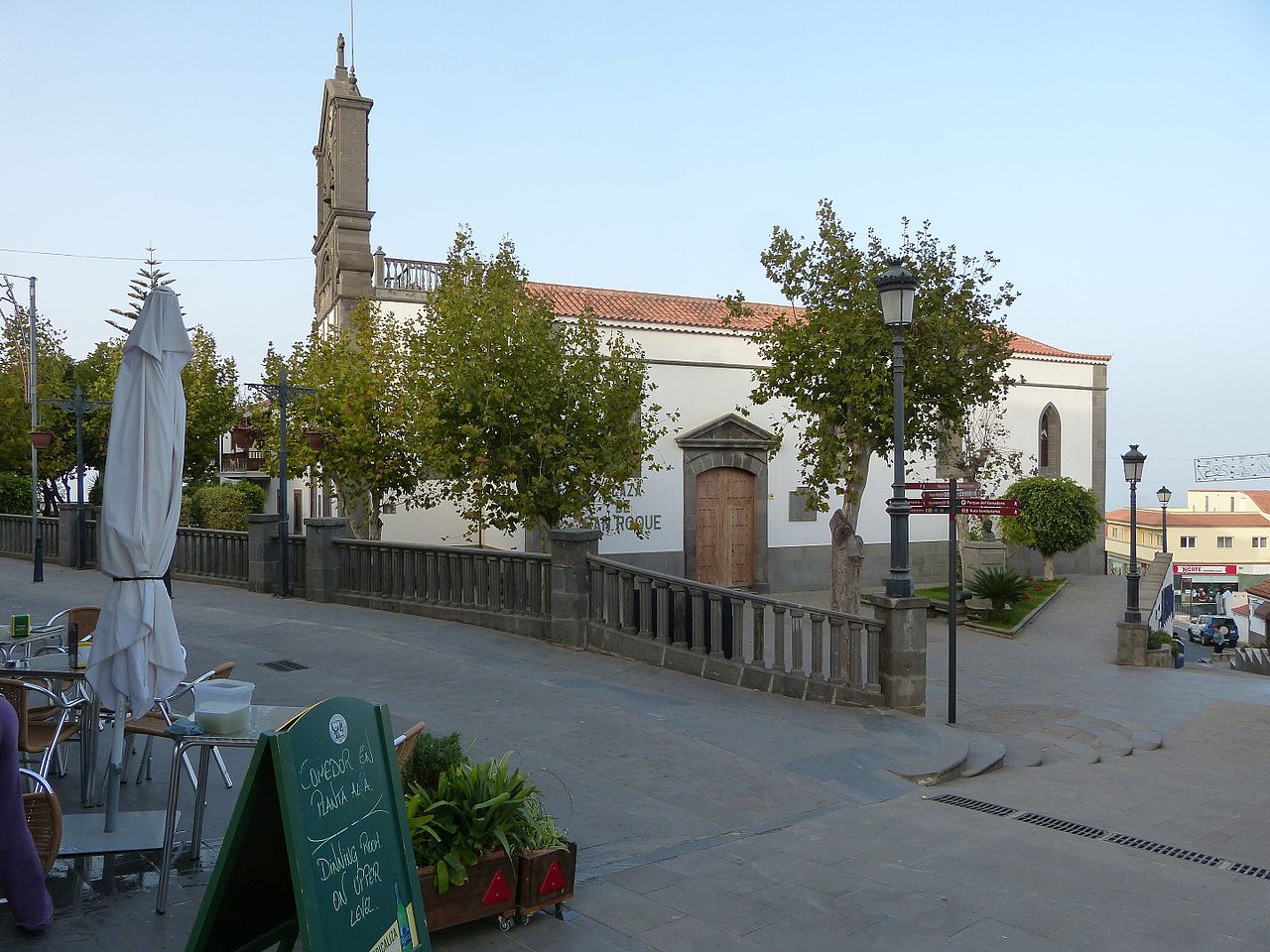
The church of San Roque, one of the monuments to see in Firgas, Gran Canaria
It constitutes the neuralgic center of the capital of the municipality which, as we told you, is Firgas. In fact, in that same place was the afurgad, name given to the old pre-Hispanic town in the area. And also from the square the population founded by the Spanish colonizers was built.
Due to the height of the square, it offers wonderful views of the Canarian coast and even, when the day is clear, you can see the islands of Tenerife y Fuerteventura. You will also see in it the statue of San Juan de Ortega, which was the first pattern of Firgas.
With regards to Church of San Roque, was built in the mid-nineteenth century on the ruins of the hermitage dedicated, precisely, to the saint we just mentioned. Of this, the facade still survives. However, a Dominican convent adjacent to the temple was demolished.
Also located in the square is the building of the Town hall, a neo-Canarian style jewel, and part of the old Royal Canal, to which stone sinks and figures of hands washing clothes were added.
Count's Mill
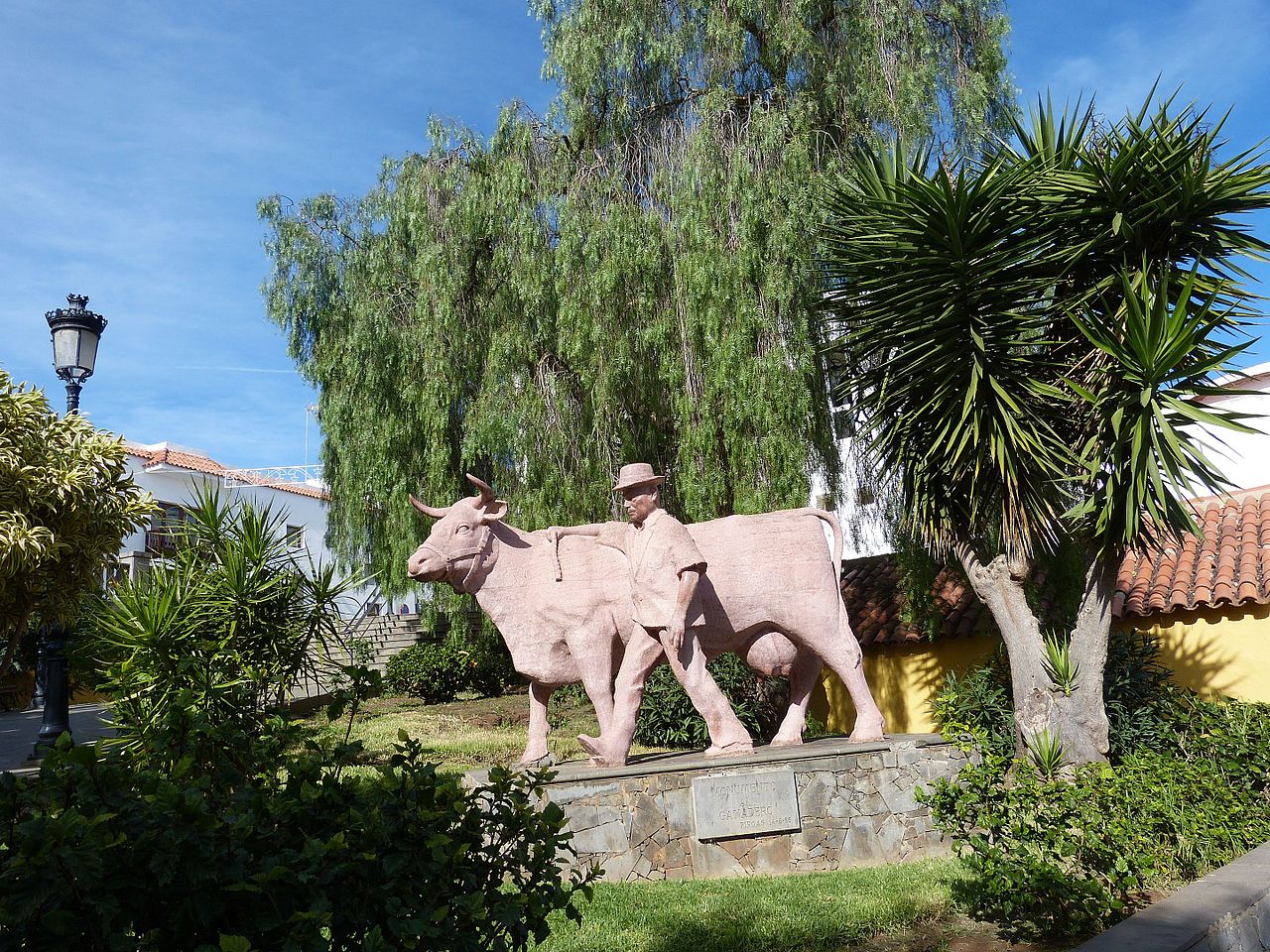
The farmer's monument
Also called Firgas water mill, dates from the XNUMXth century and is made up of several buildings: the mill itself, the grain store, the toaster and the miller's house. All of them on a ditch that allowed the mill to work.
It was active until the XNUMXth century and now, after being restored, you can visit it. In fact, it includes a museum of the Gofio and another of the rancher. We should remind you that the first was one of the dishes consumed by the Guanches and continues to be a typical Canarian recipe. It is a kind of puree made with wheat or corn flour. Thanks to the visit to the mill, you will get to know better what life was like in the town many years ago.
House of Culture and monument to the farmer
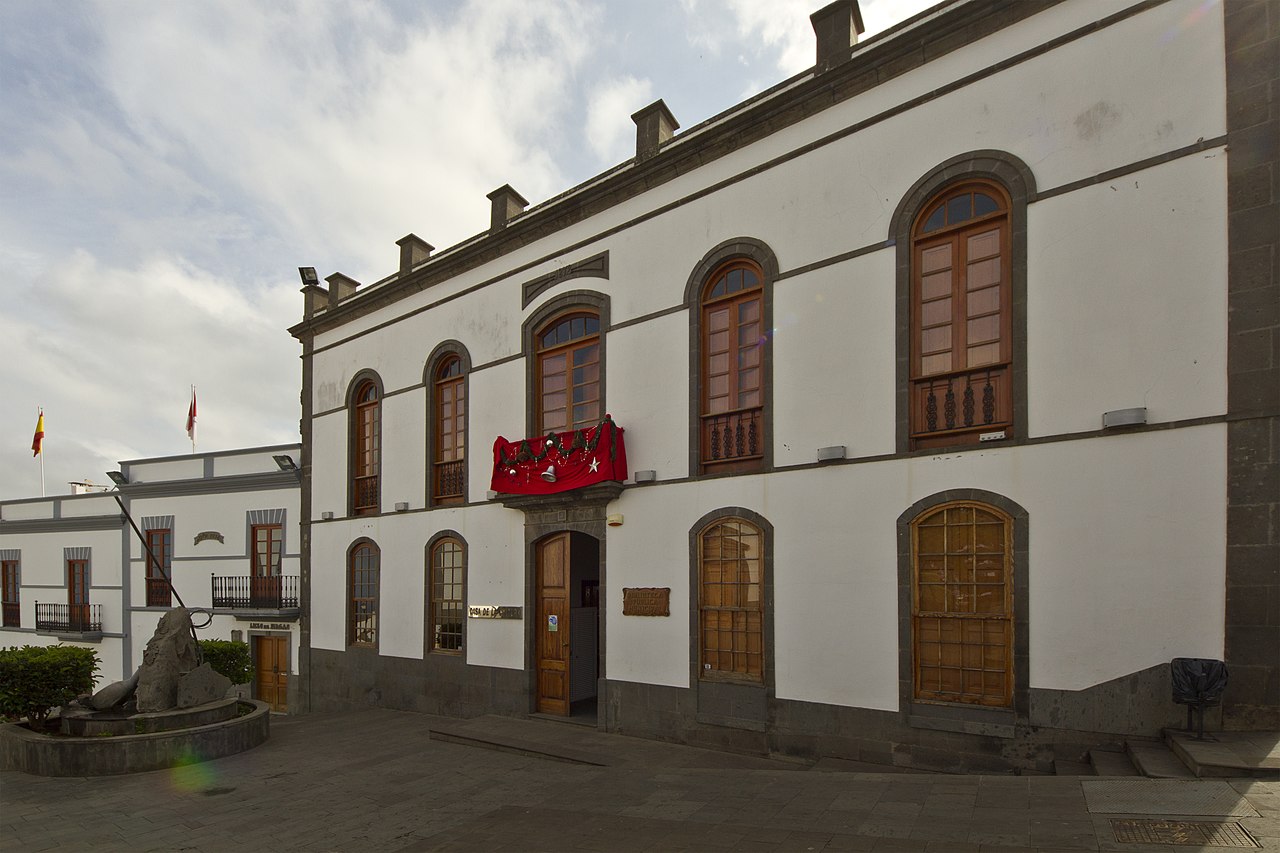
House of Culture of Firgas
The House of Culture is one of the most important buildings to see in Firgas (Gran Canaria). It was built in the second half of the XNUMXth century as a hotel to house visitors who came to the town to drink the Azuaje waters.
Later, this building neo-canarian style it served as a school and as a town hall. But today, as we told you, it is the house of culture, with the municipal library, an exhibition hall and an assembly hall.
For its part, the monument to the rancher is behind the previous one. It is the work of the Canarian sculptor Joseph Louis Marrero and was inaugurated in 1998. It pays tribute to those who, with their efforts, promoted the agricultural sector of the municipality.
Paseo de Gran Canaria and Paseo de Canarias, two essential things to see in Firgas
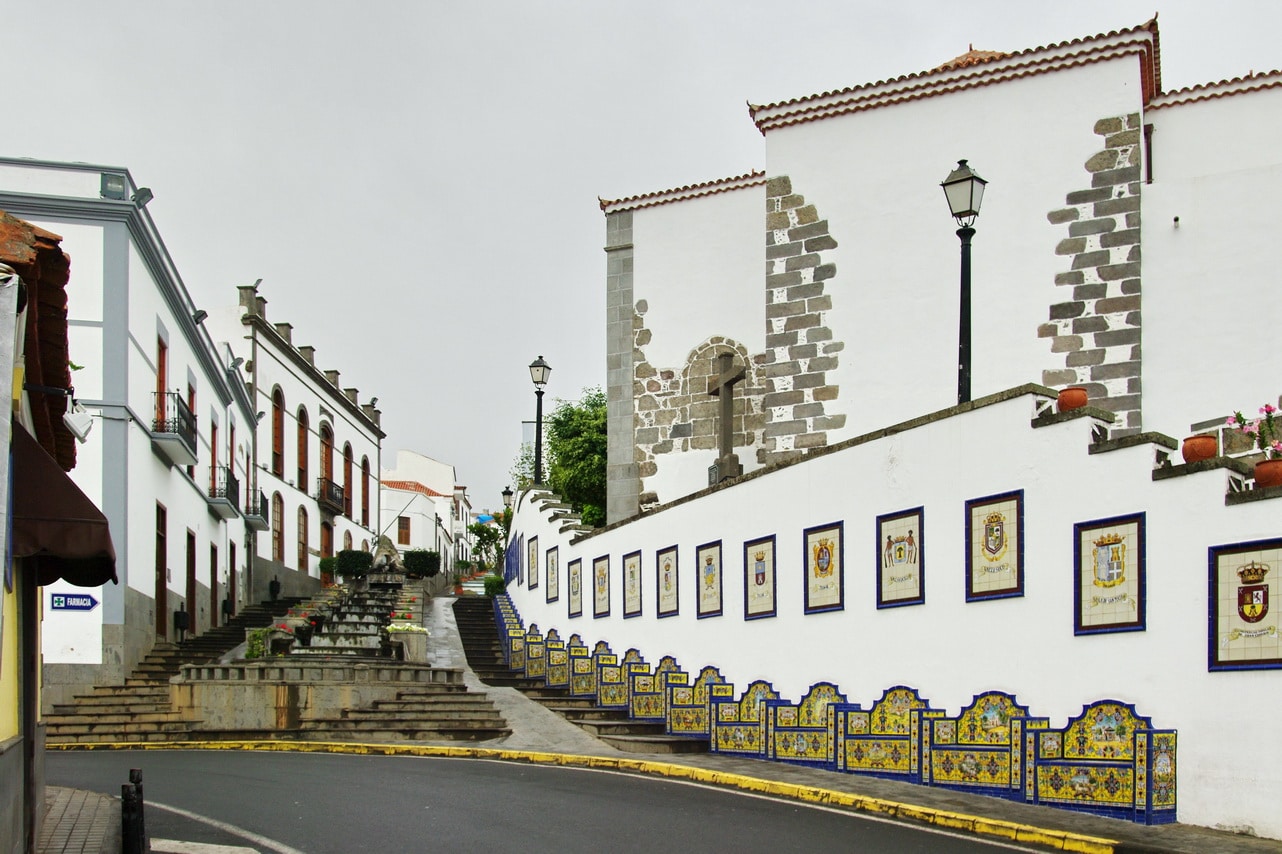
The walk of Gran Canaria
Probably the Gran Canaria tour be the main emblem of this town. It was built in the heart of Firgas, on what used to be Calle Real del Centro. Its natural slope was used to create a beautiful waterfall more than thirty meters long made of stone masonry and finished off with a beautiful monumental fountain.
But, perhaps, the greatest attraction of this promenade lies in its sides. Aligned, are the twenty-one coats of arms of the municipalities of Gran Canaria and the insular shield itself made in ceramic.
In turn, the canary walk It has the seven islands of the archipelago sculpted on the ground together with a representative landscape of each one and the heraldic shields.
It is no coincidence that these two walks have been built. Keep in mind that Firgas is known as the Water Town of Gran Canaria. Therefore, it is important that it has a symbolic and monumental presence in the heart of the town.
The viewpoints
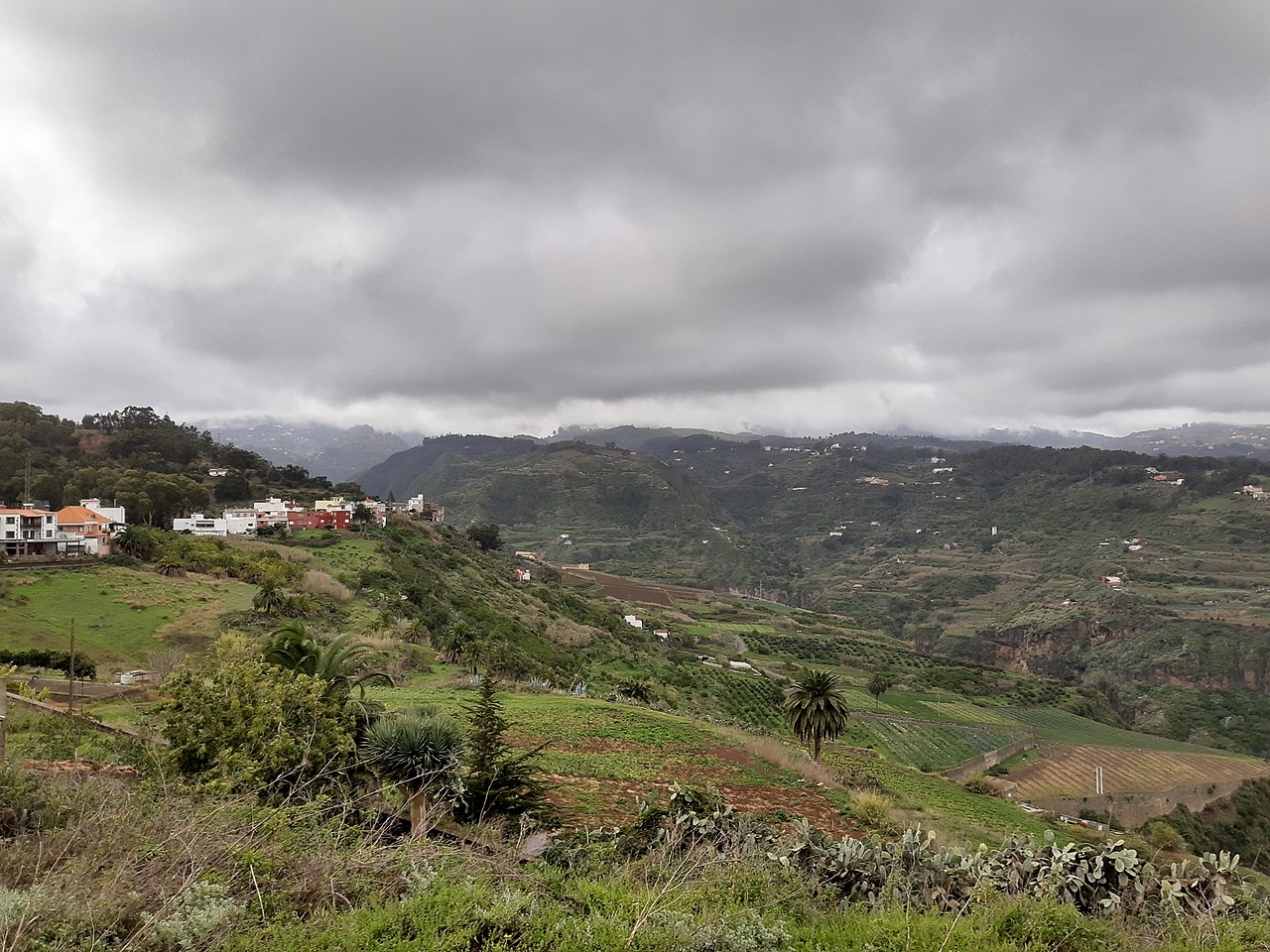
Views from the viewpoint of Las Madres
We have already mentioned the spectacular views of the Canarian coast that you can appreciate from Firgas. But now we will recommend two viewpoints that have a special charm and, of course, from which you will get wonderful photographs.
The first is The Mothers viewpoint, so called because it is located on the road that leads to that town, about three hundred meters from the historic center of Firgas. From it, you have impressive views of the north coast of Gran Canaria, but also, in the foreground, of the Azuaje, Las Madres and Guadalupe ravines.
On the other hand, the second is Las Pellas viewpoint, located on the road to Teror. In his case, the main views are of the sea. But it also includes a monument that recreates the spectacular jungle of Doramas. It is an imposing sculptural ensemble with steel tubes that reach five meters in height and that recall the trees that populated the aforementioned jungle.
Festivals and celebrations to see in Firgas
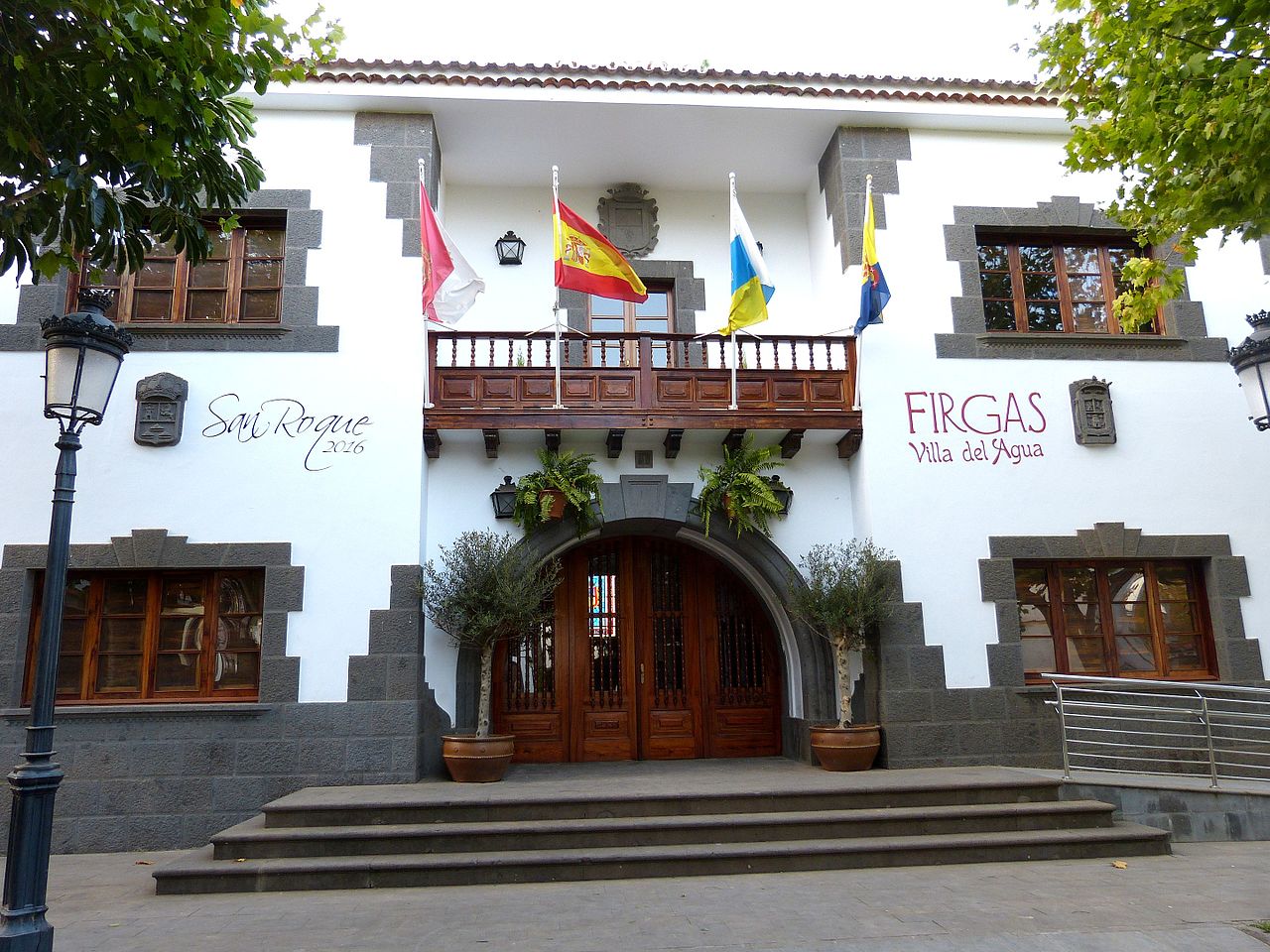
The Municipality of Firgas
It is possible that, if you dare to visit this beautiful Canarian town, you prefer to do so when it celebrates its festivities. Therefore, we are going to talk about the most important ones. The festival in honor of San Roque, patron saint of the town, takes place on August 16 and its origins date back to the XNUMXth century.
Among the activities that are organized is the Brought of the Stick. The neighbors carry a mast from the lowest part of the town to its historic center. And, once in this, they raise it together to hang the flag of the municipality from it.
Along with the above, it is also important to pilgrimage offering to San Roque himself, which takes place, in this case, on August 16. Carts adorned with fruits and flowers and pulled by oxen, pilgrims and folk groups parade to the square that bears the name of the saint to make the offering. That same day there is also a livestock fair and, finally, the town celebrates Saint Aloys Gonzaga's day, as patron saint of young people, on the first Sunday in June.
In conclusion, we have shown you all the wonders What to see in Firgas, Gran Canaria. This small town has interesting monuments such as the Paseo de Gran Canaria or the church of San Roque and a wonderful natural environment encompassed in the Parque de Doramas. Don't you think they are enough reasons to visit the so-called Villa del Agua?